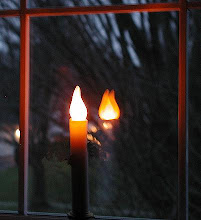Lorenzetti's Good Republic
Intro
Climate Change, Drought, Fire, Flood; all things which beset us and for which we cannot blame a bad government. What we can blame upon bad government is our social response to these evils.
Once again we come to the season of governmental discords, and view the possibility of a government shut-down.
We are teased with hope. We have just witnessed the USA not responding to a recalitrant foreign policy problem by force, by quite openly and clearly opting for peace, and freely accepting the help of other states in roles other than mere stooges in foreign wars.
That is unprecedented for the last 50 years or so.
Yet, even peace is attacked.
In a time when Peace is vilified, what is left for us, we who have no benefits from violence and wars?
Looking further, we see that we live in a time when government policies have shipped industry and jobs overseas in the name of globalization; we see a rapidly decreasing diversity of flora and fauna; we see a country such as Ecuador put it right to the international Capitalistic ethos and say:
put your money where your mouths are! If a rain forest is essential for climate health, pay us the equivalent of income for not destroying a portion of ours for oil!But the world's bluff was called. We cannot fund a rain forest.
The World is too much with us, and too much for us...
Chapter 1
In the 14th century, Ambrogio Lorenzetti painted a mural in Siena called The Allegory Of Good And Bad Government.
Andrew Zaleski ( http://evergreen.loyola.edu/brnygren/www/Honors/Compagni.htm ) compares the writings of Dino Compagni, The Chronicles of Florence, and the paintings of Lorenzetti as they relate to the life of Tuscany in the 13th and 14th centuries.
{ note (a) : observe that the "selling of political positions" may find its equally insidious equivalent today in the "selling of interest" done by lobbyists and interest groups. It is the "selling" that is the vice, not the buyer of the office that is the evil; the buyer may be otherwise virtuous.For Compagni, the universal aim of all Florentines should be the betterment of their city-state, characterized by sentiments expressed by Compagni at the beginning of Book I: “This city of Florence is very populous and its good climate promotes fecundity. Its citizens are well-bred and its women lovely and adorned; its buildings are beautiful and filled with many useful crafts, more than any other city in Italy” (5). The corruption, competition, and vice brought about through the factionalism and incessant squabbling and power jockeying is precisely what Compagni wishes to avoid, and a recurring trope in the Chronicle is this idea that the sinful behavior perpetrated by many Florentines, combined with abuse of laws, the selling of political positions (a) , and ongoing war will result in the undoing of a city-state.
Similarly in "nepotism", it is not the nephew, the nepos, who is a scourge upon the body politic, rather it is the removal of government from the realm of the rational and dumping it into the playground of individuals' whims and fancies.}
Lorenzetti’s portrayal of bad government and its effects offers striking parallels to the behavior decried by Compagni in his book. In the Allegory of Bad Government, the three figures of avarice, pride, and vain glory hover above the head of the tyrannical ruler of this bad government, who looks equal parts repulsive and monstrous—devilish, even. The connection, then, is that sinful virtue governs bad government, which results in a leader, or multiple leaders, hell-bent on power regardless of cost. The very concepts of avarice, pride, and vain glory are the behaviors that Compagni finds in the various factions developing in Florentine.
Conversely, Lorenzetti’s Allegory of Good Government depicts a scene that falls right in step with Compagni’s preferred vision for Florence. The figure of justice takes on a great significance in this painting: Wisdom sits above the head of Lady Justice, who sits atop Lady Concordia, who holds a level attached to by two cords from Justice... in a representation of anti-factionalism. Finally, a long procession of similarly dressed, similarly stationed men follows to the right of Concordia, supposedly in a representation of the common good; all the men look the same and all strive for a unified goal, instead of individual goals.
The effects of good government as depicted by Lorenzetti again are another implicit connection to Compagni. The artwork depicts a city with beautiful buildings, undifferentiated architecturally (demonstrating justice and equality); a school for children and shops for merchants are busy at work; various city figures are all taking part in different jobs to ensure the city runs smoothly; harvesting takes place in the fields, and livestock are abundant...
Lorenzetti's Countryside of the Bad Republic
Chapter 2
There is a film by Esther Podemski, The Peasant And The Priest, set in present-day Tuscany, and which examines the modern world as reflected in this area of Italy through the fresco of Lorenzetti.
This is an most admirable opportunity to combine one's conscious hopes and desires, the political means of attaining them, and a symbolic and artistic expression of those products of consciousness.
The troubles which we have today are only intractable to those impoverished in spirit and mind and imagination. By this study, I hope we gain further understanding, and we work to free ourselves from "No Exit" situations - such as war in Syria or how to live sanely with weapons - which are becoming more and more frequent in our lives: indeed, situations that defy resolution are becoming the normal.
There is a 3 minutes presentation on The Peasant And The Priest at
http://www.thepeasantandthepriest.com/
It will be well worth the time spent.
--



















No comments:
Post a Comment